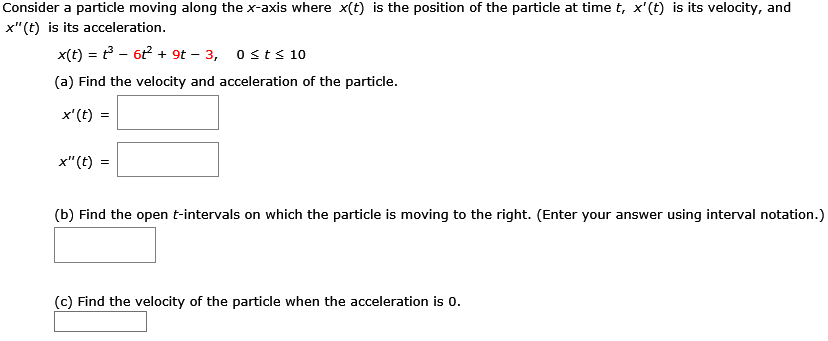Consider a particle moving along the x-axis where x(t) is the position of the particle at time t, x′(t) is its velocity, and x′′(t) is its acceleration. x(t) = t3 − 6t2 + 9t − 3, 0 ≤ t ≤ 10 (a) Find the velocity and acceleration of the particle. x′(t) = x′′(t) = (b) Find the open t-intervals on which the particle is moving to the right. (Enter your answer using interval notation.) (c) Find the velocity of the particle when the acceleration is 0.



You'll get a detailed, step-by-step and expert verified solution.
 Work With Experts to Reach at Correct Answers
Work With Experts to Reach at Correct Answers